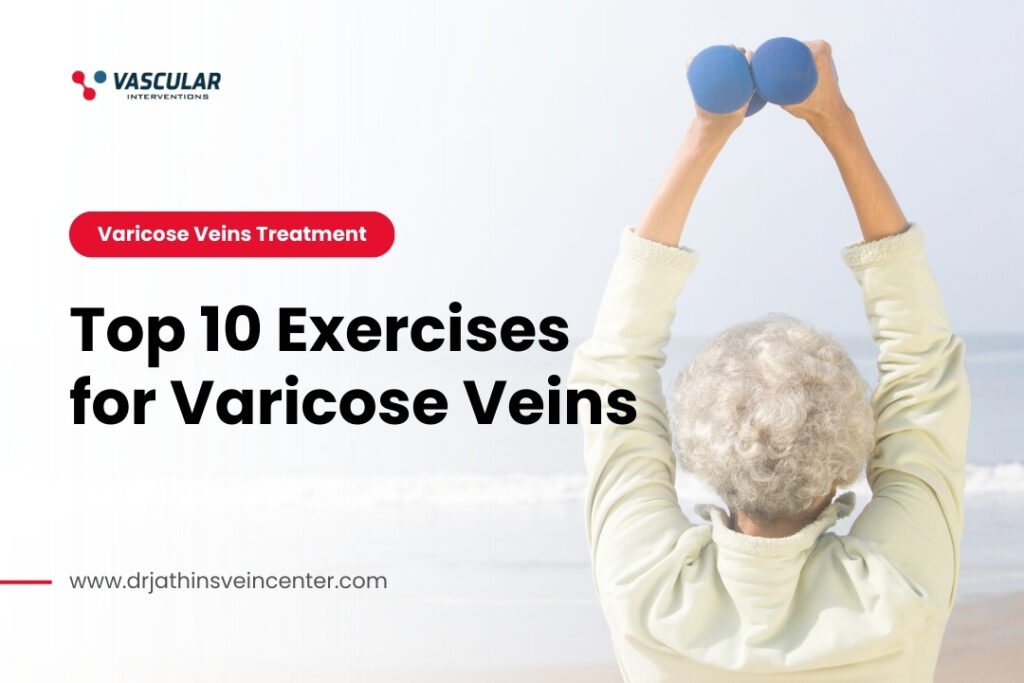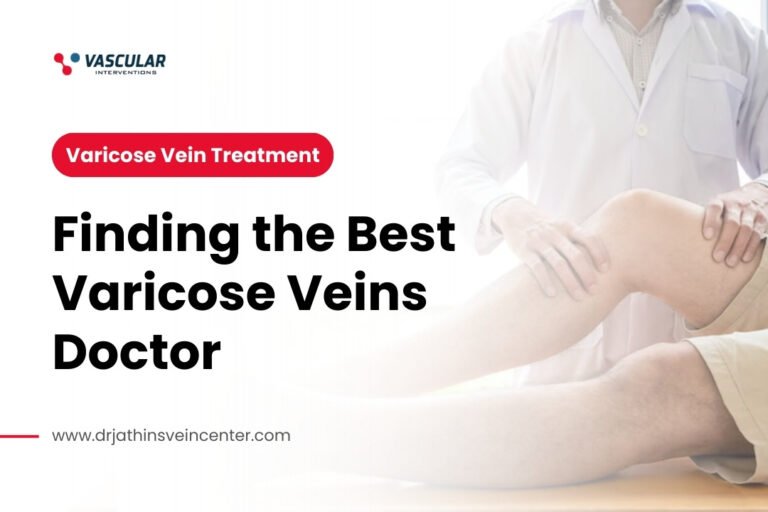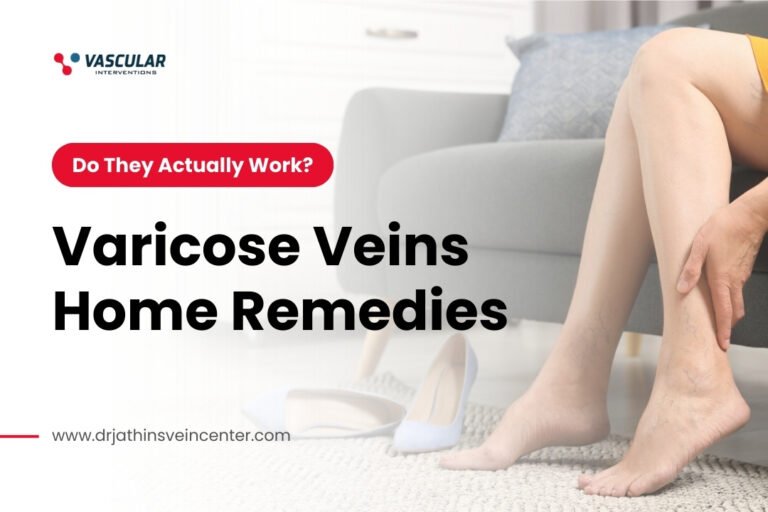Are you dealing with varicose veins and looking for ways to feel better or alleviate these symptoms?
You might know that seeing a doctor is important, but did you also know that certain exercises can make a big difference? It’s true!
Exercise can really help with varicose veins, but it’s key to pick the right kind of activities.
Some exercises are great for helping the blood flow better in your legs and easing
painful veins in legs and swelling that come with varicose veins.
We’re going to share with you the top 10 exercises that are especially good for people who have varicose veins.
These exercises aren’t too hard, and they’re really good for making your legs stronger and healthier. Plus, these exercises can fit easily into your daily routine, so you can keep your legs healthy without a lot of extra effort.
Are you ready to learn about these simple but effective exercises and start on the path to healthier legs? Let’s dive in!
Importance of Exercise in Managing and Reducing Symptoms
Exercise is really important if you have varicose veins.
Why?
Because when you move your body, especially your legs, it helps your blood flow better. This is really good for your veins.
When you have varicose veins, your legs might hurt or feel heavy. Doing the right exercises can make them feel much better. It’s like giving your legs a gentle massage from the inside! This can reduce the pain and swelling that varicose veins can cause.
Also, when you exercise regularly, it makes your leg muscles stronger. Strong muscles are great for your veins because they help push the blood back up to your heart. Think of it like a team where your muscles and veins work together to keep your blood moving.
So, exercising isn’t just about staying fit; it’s a big part of taking care of your veins and feeling better.
Remember, you don’t need to do really hard exercises. Even simple ones can make a big difference. Just moving more can help your legs a lot.
Let’s keep going to find out which exercises are the best for you!
Exercise 1: Walking
Walking is excellent for your vein health as it strengthens and tones the leg muscles, which in turn supports the veins in proper blood circulation.
Regular walking can also reduce swelling and discomfort associated with varicose veins by enhancing overall blood flow in your legs.
Varicose Veins Doctor’s Tip: Incorporate walking into your daily routine by choosing to walk short distances instead of driving, using stairs instead of elevators, or taking brisk walks during your breaks at work.
Exercise 2: Leg Lifts
Leg lifts are beneficial in improving circulation and reducing the pressure in leg veins.
They help in draining the blood back towards the heart and can prevent blood from pooling in the veins, which is a common issue with varicose veins.
Varicose Veins Doctor’s Tip: Practice leg lifts while lying down, keeping your legs elevated above your heart level. You can do this exercise before bed or in the morning for about 5-10 minutes.
Exercise 3: Calf Raises
Calf raises specifically target the muscles that play a crucial role in pumping blood through the veins.
Strengthening these muscles helps maintain healthy vein function and alleviates symptoms of varicose veins.
Varicose Veins Doctor’s Tip: You can do calf raises anywhere, even while standing in line or cooking. Aim for three sets of 10-15 raises throughout the day.
Exercise #4: Bicycle Legs
Benefits: This exercise mimics the motion of cycling, promoting leg movement and circulation without the stress of weight-bearing activities. It’s effective in stimulating blood flow and reducing the risk of blood pooling in the veins.
Varicose Veins Doctor’s Tip: Perform bicycle legs exercise on your back for a few minutes daily, perhaps while watching TV or after waking up in the morning.
Exercise #5: Ankle Circles
Benefits: Ankle circles enhance circulation in the lower legs and feet, areas often affected by varicose veins. They help in keeping the blood moving and reducing pressure in the veins.
Varicose Veins Doctor’s Tip: Do ankle circles periodically throughout the day, especially if you have a job that requires sitting or standing for long periods.
Exercise #6: Marching in Place
Benefits: Marching in place is a simple yet effective way to activate the leg muscles, encouraging blood flow and reducing the heaviness and aching often associated with varicose veins.
Varicose Veins Doctor’s Tip: Take short breaks to march in place for a few minutes, whether you’re at home or in the office. This can be easily integrated into your daily routine.
Exercise #7: Yoga
Benefits: Yoga helps in improving flexibility, reducing leg swelling, and enhancing circulation. Certain yoga poses are specifically beneficial in relieving the pressure in leg veins and promoting venous health.
Varicose Veins Doctor’s Tip: Join a beginner’s yoga class or follow simple yoga routines online, focusing on poses that elevate the legs and promote relaxation.
Exercise #8: Swimming
Benefits: Swimming is an excellent low-impact exercise that works the entire body, including the legs, without putting pressure on the veins. The buoyancy of water supports the body and aids in efficient blood circulation.
Varicose Veins Doctor’s Tip: Try swimming or water aerobics classes, aiming for at least 30 minutes per session, 2-3 times a week.
Exercise #9: Rocking Feet
Benefits: Rocking your feet from heels to toes activates the calf muscles, aiding in blood flow. This simple exercise can help in pumping blood up through the legs, benefiting those with varicose veins.
Varicose Veins Doctor’s Tip: Practice rocking your feet whenever you’re sitting, such as at your desk or while watching TV. It’s an easy exercise that can be done almost unconsciously.
Exercise #10: Stretching
Benefits: Stretching helps maintain muscle flexibility, which is crucial for good circulation. Regular leg stretches can prevent stiffness and promote better blood flow, reducing the symptoms of varicose veins.
Varicose Veins Doctor’s Tip: Incorporate a routine of gentle leg stretches in the morning and evening. Focus on stretches that target the calves, hamstrings, and thighs.
Consulting the Best Doctor for Varicose Veins in Mumbai
As we’ve explored, the above exercises can be really helpful in easing some of the discomfort caused by varicose veins.
However, it’s essential to consult with a varicose vein doctor before you start any new exercise program, especially if you’re experiencing significant pain or other health issues.
If you’re not sure who to consult for varicose veins in Mumbai, you should consider speaking with Dr. Jathin. He is widely recognized for his expertise and is considered one of the best varicose veins doctors in Mumbai. He specializes in various minimally-invasive procedures, such as sclerotherapy, endovenous laser ablation, and surface laser therapy.
By consulting the varicose veins expert, you can be confident that you’re in capable hands and will receive the guidance and treatment that’s right for your specific condition.
Conclusion
While exercise is a great way to help prevent varicose veins, it’s really important to be careful, especially if you already have them.
But remember, doing the wrong kind of exercise or doing it at the wrong time can actually make things worse.
If you have varicose veins, try not to do heavy exercises right away. This might make them more painful or lead to other problems later.
First, talk to your varicose vein doctor before starting any new exercises.
Doing these exercises regularly can really help with the pain and swelling from varicose veins, and they’re good for your overall health too.


